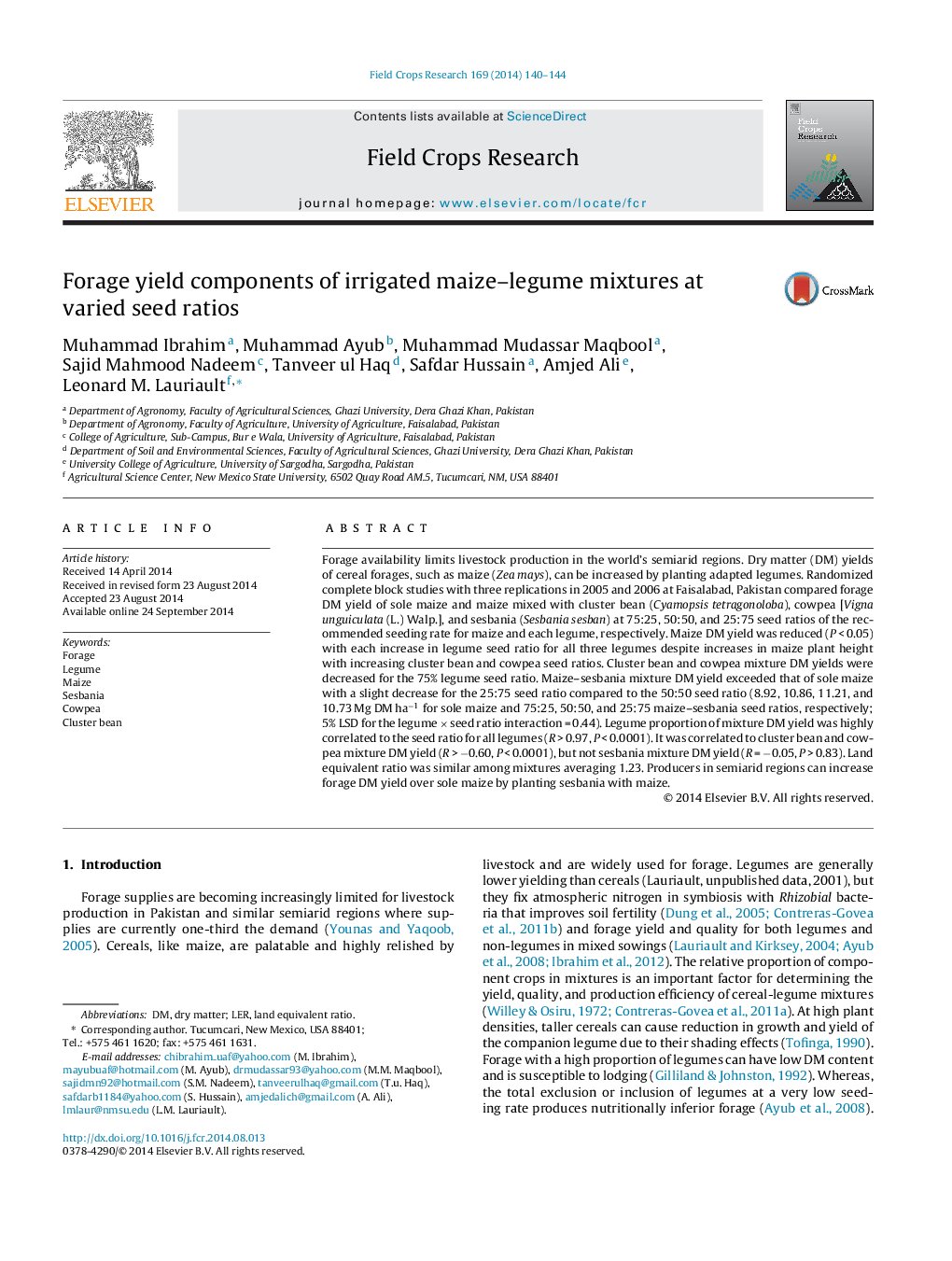| Article ID | Journal | Published Year | Pages | File Type |
|---|---|---|---|---|
| 4509958 | Field Crops Research | 2014 | 5 Pages |
•Maize–legume (cowpea, cluster bean, and sesbania) forage yield was evaluated.•Only addition of sesbania increased yield over sole maize.•Mixture legume yield proportion was highly correlated to legume seed ratio.•Maize–sesbania legume yield proportion was not correlated to mixture yield.•Mixture land equivalent ratio was not different across legumes or seed ratios.
Forage availability limits livestock production in the world's semiarid regions. Dry matter (DM) yields of cereal forages, such as maize (Zea mays), can be increased by planting adapted legumes. Randomized complete block studies with three replications in 2005 and 2006 at Faisalabad, Pakistan compared forage DM yield of sole maize and maize mixed with cluster bean (Cyamopsis tetragonoloba), cowpea [Vigna unguiculata (L.) Walp.], and sesbania (Sesbania sesban) at 75:25, 50:50, and 25:75 seed ratios of the recommended seeding rate for maize and each legume, respectively. Maize DM yield was reduced (P < 0.05) with each increase in legume seed ratio for all three legumes despite increases in maize plant height with increasing cluster bean and cowpea seed ratios. Cluster bean and cowpea mixture DM yields were decreased for the 75% legume seed ratio. Maize–sesbania mixture DM yield exceeded that of sole maize with a slight decrease for the 25:75 seed ratio compared to the 50:50 seed ratio (8.92, 10.86, 11.21, and 10.73 Mg DM ha−1 for sole maize and 75:25, 50:50, and 25:75 maize–sesbania seed ratios, respectively; 5% LSD for the legume × seed ratio interaction = 0.44). Legume proportion of mixture DM yield was highly correlated to the seed ratio for all legumes (R > 0.97, P < 0.0001). It was correlated to cluster bean and cowpea mixture DM yield (R > −0.60, P < 0.0001), but not sesbania mixture DM yield (R = −0.05, P > 0.83). Land equivalent ratio was similar among mixtures averaging 1.23. Producers in semiarid regions can increase forage DM yield over sole maize by planting sesbania with maize.
